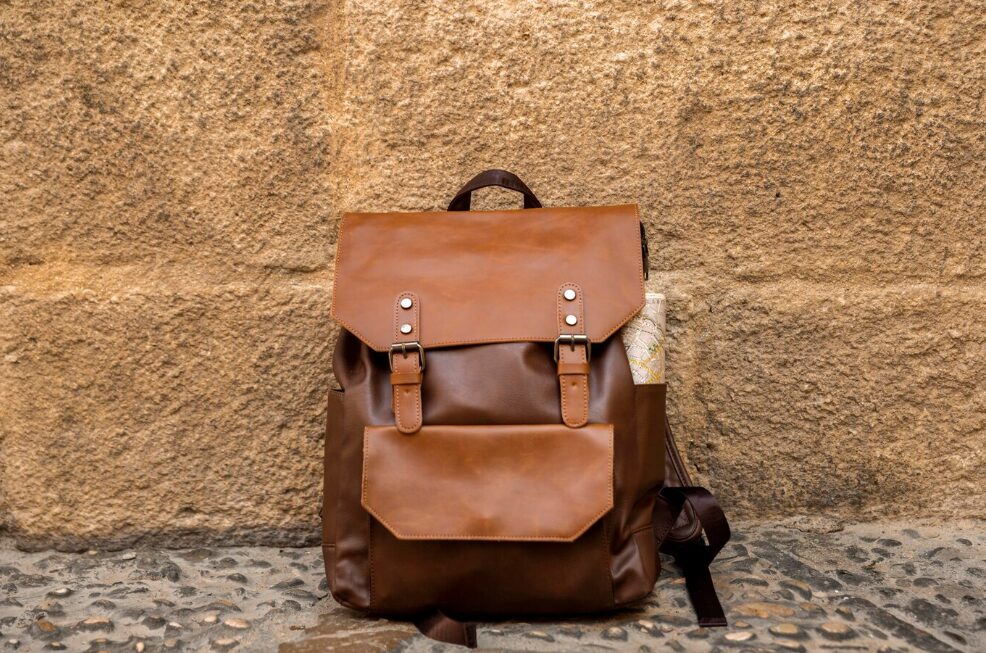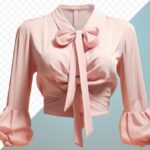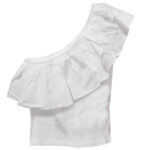Introduction to Wholesale Leather Backpack Purses
Welcome to the world of timeless style and functionality – wholesale leather backpack purses. As the fashion industry continues to evolve, the allure of leather remains constant, and backpack purses have emerged as versatile, on-trend accessories. This guide aims to navigate retailers through the dynamic realm of wholesale leather backpack purses, providing insights into market trends, design preferences, and strategic considerations for successful distribution.
Why Leather Backpack Purses?
Leather, known for its durability, luxurious feel, and classic aesthetic, makes an ideal material for backpack purses. The fusion of practicality and sophistication in these accessories appeals to a broad consumer base, from students and professionals to fashion-conscious individuals seeking a hands-free, yet stylish, solution.
Growing Demand in the Wholesale Market
The demand for leather backpack purses in the wholesale market is witnessing a substantial upswing. Retailers are increasingly recognizing the versatile nature of these products, capable of complementing various lifestyles and fashion preferences. Whether catering to a boutique or a larger retail outlet, understanding the dynamics of the wholesale leather backpack market is pivotal for success.
In the sections that follow, we’ll delve into the intricate details of leather backpack purse designs, analyze target markets, discuss supplier selection criteria, explore branding opportunities, and outline effective marketing and inventory management strategies. So, buckle up – or should we say, strap up – as we embark on a journey through the wholesale landscape of leather backpack purses.
Design and Styles of Leather Backpack Purses
Dive into the world of wholesale leather backpack purses, where design meets functionality in an array of captivating styles. Understanding the diverse designs is essential for retailers seeking to curate a collection that resonates with their customer base.
1. Classic Elegance:
Embrace timeless sophistication with classic leather backpacks. Clean lines, minimalistic detailing, and high-quality leather create an enduring appeal suitable for various occasions.
2. Bohemian Chic:
For a free-spirited and eclectic vibe, consider bohemian-inspired leather backpacks. Tassels, fringe, and artisanal details add character, making these backpacks a statement piece.
3. Urban Utility:
Designed for the modern urbanite, utility-focused leather backpacks feature multiple compartments, tech-friendly features, and a sleek, streamlined aesthetic, catering to the needs of on-the-go lifestyles.
4. Vintage Vibes:
Capture the nostalgia of bygone eras with vintage-inspired leather backpacks. Distressed leather, antique hardware, and unique silhouettes evoke a sense of history and individuality.
5. Trendsetting Textures:
Experiment with textures to elevate the design. From embossed patterns to reptile-inspired finishes, incorporating diverse textures adds a tactile and visually appealing dimension.
6. Convertible Styles:
Versatility is key in modern fashion. Look for convertible leather backpacks that seamlessly transform into other forms, such as a tote or a crossbody, providing adaptability for various occasions.
7. Fashion-Forward Details:
Stay on-trend with fashion-forward details like bold hardware, asymmetrical zippers, and unconventional closures. These unique elements contribute to a cutting-edge and stylish look.
Understanding the nuances of these design styles allows retailers to curate a wholesale collection that caters to a diverse audience. Whether your customers lean towards classic sophistication, urban practicality, or bohemian flair, a well-rounded selection ensures your inventory appeals to a broad spectrum of tastes.
Target Market Analysis for Leather Backpack Purses
In the realm of wholesale leather backpack purses, a thorough understanding of the target market is paramount for retailers aiming to align their offerings with consumer preferences. Let’s delve into key considerations for a comprehensive market analysis.
Identifying Demographics:
Pinpointing the demographics of potential consumers is the first step. Leather backpack purses cater to a diverse audience, ranging from students and professionals to fashion-forward individuals seeking versatile accessories.
Lifestyle Preferences:
Consider the lifestyle preferences of your target market. For students, prioritize functional designs with ample space for books and gadgets. Urban professionals may lean towards sleek, tech-friendly options that seamlessly transition from work to leisure.
Fashion Consciousness:
Understanding the level of fashion consciousness within your target demographic is crucial. Some consumers may prioritize classic, enduring styles, while others might gravitate towards trendsetting, avant-garde designs.
Age Groups:
Leather backpack purses span age groups, with each demographic having distinct preferences. Younger consumers may seek vibrant colors and innovative designs, while older demographics might appreciate timeless, sophisticated options.
Market Segmentation:
Segmenting the market based on factors like income levels, geographic locations, and lifestyle preferences aids in creating targeted marketing strategies. Tailoring your offerings to specific segments ensures a more personalized and appealing shopping experience.
Seasonal Considerations:
Understand how seasonal changes influence consumer preferences. Lighter, brighter colors might be popular in spring and summer, while richer tones and textured designs may gain traction in fall and winter.
Competitor Analysis:
Examine competitors in the wholesale market. Identify gaps in their offerings or unique selling points and use this information to position your leather backpack purses uniquely.
By conducting a comprehensive target market analysis, retailers can align their inventory with the specific needs and desires of their customers. This strategic approach not only enhances customer satisfaction but also positions the wholesale business for sustained success in the dynamic leather backpack purse market.

Supplier Selection and Evaluation
Choosing reliable suppliers is a critical aspect of navigating the wholesale leather backpack purse market. Retailers must adopt a meticulous approach to ensure the quality, authenticity, and reliability of their leather products.
1. Material Sourcing:
Begin by scrutinizing the source of materials. A reputable leather supplier should provide transparent information about the origin and quality of their leather. Authenticity and ethical sourcing contribute to a trustworthy partnership.
2. Quality Standards:
Evaluate the supplier’s adherence to quality standards. Assess the craftsmanship, stitching, and overall construction of sample products. Consistency in quality ensures customer satisfaction and fosters a positive reputation.
3. Reputation and Reviews:
Conduct thorough research on the supplier’s reputation. Seek reviews from other retailers who have collaborated with them. Positive testimonials and a solid industry reputation are indicative of a trustworthy supplier.
4. Compliance and Certification:
Ensure the supplier complies with industry regulations and standards. Certification for ethical practices, environmental responsibility, and product safety are crucial factors in selecting a supplier committed to industry best practices.
5. Capacity and Timeliness:
Assess the supplier’s production capacity to meet your demand. Timely delivery is essential to avoid inventory gaps. Clearly communicate your expectations regarding production timelines and confirm the supplier’s ability to meet them consistently.
6. Customization Options:
Explore the supplier’s flexibility in accommodating customization requests. Whether it’s embossed logos, unique hardware, or specific design alterations, a supplier willing to tailor products to your brand’s specifications adds value to the collaboration.
7. Financial Stability:
Examine the financial stability of potential suppliers. A financially secure supplier is more likely to invest in quality materials and maintain consistent production standards. This stability is indicative of a long-term and reliable partnership.
By diligently evaluating potential suppliers based on these criteria, retailers can establish strong, dependable partnerships that form the foundation of a successful wholesale business in leather backpack purses.
Brand Collaboration and Customization Opportunities
In the dynamic landscape of wholesale leather backpack purses, brand collaboration and customization open doors to unique and exclusive offerings. Retailers seeking to stand out in the market should explore these opportunities for added value and brand differentiation.
1. Collaborative Design Projects:
Engage in collaborative design projects with established brands or emerging designers. Co-creating limited-edition leather backpacks adds exclusivity and attracts a broader audience.
2. Co-Branding Initiatives:
Consider co-branding initiatives where your retail brand partners with other complementary brands. This synergy amplifies reach and introduces your leather backpack purses to new customer segments.
3. Limited-Edition Collections:
Launch limited-edition collections, leveraging collaborations or unique design concepts. Scarcity and exclusivity drive demand, creating a sense of urgency among consumers.
4. Customization for Retailers:
Offer customization options for retailers who seek a personalized touch. This could involve adding logos, adjusting hardware, or incorporating unique design elements that align with a retailer’s brand identity.
5. Consumer Personalization:
Explore direct-to-consumer customization options. Allow customers to personalize their leather backpacks, fostering a sense of ownership and connection with the product.
6. Seasonal Themes and Trends:
Align customization opportunities with seasonal themes and fashion trends. This ensures that your leather backpacks remain on-trend and appealing to a wide range of consumers.
7. Social Media Collaborations:
Leverage social media influencers and fashion bloggers for collaborative campaigns. Their endorsement adds credibility and widens the reach of your leather backpack purse offerings.
Embracing brand collaborations and customization not only differentiates your wholesale business but also creates a unique value proposition in the market. The flexibility to adapt to current trends and cater to diverse preferences positions your brand as a dynamic player in the competitive world of leather accessories.

Marketing Strategies for Wholesale Leather Backpacks
In a saturated market, effective marketing strategies are essential for showcasing your wholesale leather backpacks and establishing a strong brand presence. Here are key strategies to elevate your marketing game:
1. Stunning Visuals:
Invest in high-quality visuals. Professional photos showcasing the craftsmanship and details of your leather backpacks create a compelling narrative that resonates with potential buyers.
2. Engaging Content:
Craft engaging and informative content. Utilize blog posts, social media captions, and product descriptions to communicate the unique features, materials, and inspirations behind your leather backpacks.
3. Influencer Collaborations:
Leverage the power of influencers. Collaborate with fashion influencers and bloggers to showcase your leather backpacks. Their authentic endorsements can significantly impact your brand’s visibility.
4. Social Media Platforms:
Optimize your presence on key social media platforms. Utilize Instagram, Pinterest, and Facebook to visually showcase your leather backpacks, engage with your audience, and drive traffic to your online store.
5. Email Marketing Campaigns:
Implement targeted email marketing campaigns. Keep your audience informed about new arrivals, promotions, and exclusive offers. Utilize compelling visuals and persuasive copy to encourage conversions.
6. Seasonal Promotions:
Create seasonal promotions to capitalize on changing consumer preferences. Highlight how your leather backpacks align with current fashion trends and offer limited-time discounts or exclusive bundles.
7. Collaborative Giveaways:
Collaborate with other brands for giveaways. This not only expands your reach but also introduces your leather backpacks to new audiences. Ensure that the collaboration aligns with your brand ethos.
8. Trade Shows and Events:
Participate in relevant trade shows and events. These platforms provide opportunities to network, showcase your leather backpacks, and establish B2B connections with potential retailers.
9. Customer Testimonials:
Feature customer testimonials on your website and marketing materials. Positive reviews build trust and credibility, influencing potential buyers to choose your leather backpacks.
10. SEO Optimization:
Optimize your website for search engines. Implement SEO strategies to enhance the visibility of your leather backpacks in online searches, driving organic traffic to your online store.
Implementing a combination of these marketing strategies ensures a comprehensive approach to promoting your wholesale leather backpacks. By leveraging both digital and traditional avenues, you can create a robust marketing strategy that resonates with your target audience and sets your brand apart in the competitive market.
Inventory Management and Seasonal Sales
Efficient inventory management is a cornerstone of successful wholesale operations, particularly in the realm of leather backpacks. Implementing strategies that align with seasonal trends can optimize sales and inventory turnover.
1. Forecasting and Planning:
Anticipate demand by analyzing past sales data and industry trends. Plan your inventory accordingly, ensuring a balance between popular designs and new arrivals.
2. Seasonal Rotation:
Rotate your inventory seasonally. Highlight backpacks suitable for different weather conditions or fashion trends. This keeps your offerings fresh and aligns with consumer preferences.
3. Limited-Time Promotions:
Introduce limited-time promotions during peak seasons. Whether it’s back-to-school or holiday sales, offering discounts or exclusive bundles can stimulate sales and clear out older inventory.
4. Collaborative Collections:
Collaborate with designers or brands for exclusive seasonal collections. This not only attracts attention but also creates a sense of urgency among buyers, driving sales during specific periods.
5. Pre-Order Options:
Implement pre-order options for upcoming seasons. This not only gauges interest but also helps manage production and inventory levels more accurately.
6. Clearance Sales:
Periodically conduct clearance sales to move out older or slower-moving inventory. Clearing space for new arrivals ensures your offerings stay current and in line with market demands.
7. Real-Time Monitoring:
Invest in inventory management systems that allow real-time monitoring. This helps in identifying fast-selling items, slow-moving stock, and restocking needs promptly.
8. Bulk Ordering Incentives:
Encourage bulk ordering with incentives. Offering discounts or exclusive deals for bulk purchases motivates retailers to stock up, aiding in efficient inventory turnover.
9. Collaborative Marketing:
Collaborate with retailers on joint marketing efforts during specific seasons. Coordinated campaigns can boost visibility and drive sales for both parties.
10. Continuous Evaluation:
Regularly evaluate your inventory performance. Assess the success of seasonal strategies, gather customer feedback, and adjust your approach accordingly for continuous improvement.
Implementing a dynamic inventory management strategy aligned with seasonal sales trends not only optimizes your offerings but also ensures that your wholesale leather backpack business remains agile and responsive to the ever-evolving market demands.







